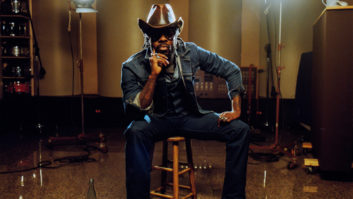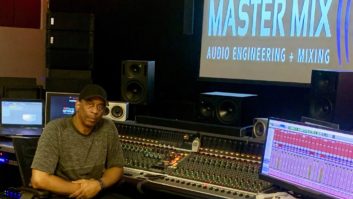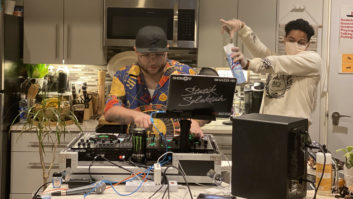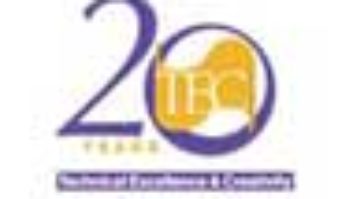Calling in a session player can add a lot to a track, especially in these days of self-made artist/engineer/producer/composer projects. Besides bringing a new texture to productions, a great session player offers a certain touch that samples and loops could never achieve.
The same way the right spices can round out a recipe, a master musician can add a natural interpretation to a song. After struggling to get the right “feel” on a percussion track for an album I once co-produced, I convinced the artist to bring in legendary drummer Pete Escovedo, who nailed the part, giving us exactly what we wanted in less than a half-hour. Not only did we get a brilliant performance, but Escovedo also suggested some other small overdubs that gave the track a great sound. As a bonus, the name of a famous guest performer on an album project can boost sales — or at least help spark interest from reviewers and/or radio program directors.
In a contest sponsored by Broadjam and Sessionplayers.com, artist Byran Bryant of Houston (in monitor) won a remote session at the Institute of Production and Recording in Minneapolis with (front row from left) guitarist Dave Barry, engineer/IPR director Tom Tucker and Broadjam’s Roy Elkins; and (back row, from left) Sessionplayer.com’s Joey Finger, engineer Steve Hodge, keyboardist Ricky Peterson, Source Elements’ Robert Marshall and IPR instructor/bassist Paul Peterson.
Working with top session pros is a real pleasure, but it can be logistically difficult, especially when working with a limited budget. It helps if the player you want is local, but using someone who’s hundreds — or thousands — of miles away used to require either traveling to a distant studio and booking session time, or convincing the player to travel to your facility, with you picking up the tab for plane fare, hotel, per diem, limo, etc. Either way, the traditional model is expensive — even before you figure in the player’s fees.
Fortunately, with the ease of DAW file exchange and the proliferation of high-end recording rigs in musicians’ private studios, a new model has emerged for long-distance sessions. These may involve real-time, live interaction with file exchange over Internet, storing session takes to an FTP site or — more commonly — simply burning session files to CD-ROM, with courier/mail delivery of the completed performances.
SESSION PLAYERS, A LA CARTE
One company taking advantage of this new technology is SessionPlayers.com, a network of top music pros with their own studios. Founded by Joey Finger (himself an in-demand session drummer), SessionPlayers.com has a simple Web menu listing dozens of top players in just about every musical style. The lineup includes some very well-known names, such as Robben Ford, Jonathan Cain, Greg Phillinganes, Will Lee, Leland Sklar, Peter Erskine, Gregg Bissonette, Ndugu Chancler and a host of others, including vocalists. The roster also features some 15 recording engineers offering mixing services.
The process begins with the client examining the profiles, sound clips and discographies provided for each player on the site. Then, after paying a $25 membership fee/deposit (refundable with the first session), the client contacts Finger, who sets up the session. As for the fees, “You can get a reputable player for as little as $250 a song,” Finger explains, “going on up to over $1,000, but most are about $500 per song — in the range of double-scale, although you don’t have to pay for engineering, travel, studio time or cartage.”
Drummer Dave Weckl’s kit is miked and ready to go.
photo: Gene Martin
Obviously, most people prefer to have the ability to listen in and communicate with the artist during the tracking. “If people want to do a live session, I’ve found that [Source Elements’] Source-Connect software works very well,” says Finger. “The company has another product called Source-Live that only requires an Internet hookup with QuickTime listening capability, enabling users to hear near-real-time 128kbps files.”
Such live sessions certainly appeal to the client, and they eliminate the waiting time to hear an offline MP3 version for approval. The downside is that live requires the player to be available at a certain prearranged time, rather than performing the track whenever their schedule permits, such as 3 a.m., after a gig. And the players themselves have different live vs. offline preferences, which may affect their session rates. “These sessions can work either way, but many people are just thrilled to hire that one great guy and let the player decide the direction and feel of the performance,” says Finger. “But it’s their audio, and their song, so we usually provide the customer with multiple takes to choose from, offering the flexibility of editing the takes or comping it any way they want.
“The process really lowers the bar for people who previously couldn’t afford these players, while the players have the benefit of less travel and can work at home when they want.”
HORNS TO GO
Although typical drum, bass, keys, guitar or solo horn sessions are fairly straightforward, the process is more complicated for section horns. Simply hiring a horn section for harmony parts can be a recipe for disaster, unless you go into the session armed with an arrangement and charts. With that in mind, session trumpeter Ron Blake (whose credits range from Green Day to Dr. Dre) started www.hispeedhorns.com, designed to provide arrangement assistance and affordable horn players for remote session work.
“We can do whatever the clients want,” says Blake. “We can record separate parts and send them, which offers more control in the mix,. If they need a live ensemble with players together, we can do that. We cater to independent artists who want to add horns to their songs for a reasonable fee.” Those fees depend on the number of players in the section; written arrangements start at about $50, but they go up based on the complexity of the parts.
FLYIN’ SOLO
Not all remote sessions come from referral services. Drummer Dave Weckl — whose credits read like a who’s who of rock, jazz and pop — began offering remote sessions in 2001. From www.daveweckl.com, clients can arrange for Weckl to perform from his private Pro Tools HD Accel 3 — equipped studio, where his double-kick, birch Yamaha Absolute Vintage kit is miked and ready to go. Fees are typically $1,000 a song (complex solos are additional) but include the performance fee, studio time, engineering fee and administrative costs.
“I’m on the road more than half the year, so I’m a bit selective about project quality and estimated time investment,” Weckl explains. “Usually, the proposed client sends me MP3 demos of the music. Once we move forward, clients send audio files, usually broadcast WAV — the most cross-platform — friendly type of file — either on disk or via the Internet using either Digi Delivery or an IM service like AIM, iChat or Skype. I’ve found FTP sites to be the least reliable and the slowest. Sync is a major issue, so files must start from the very beginning of the sequence. Most clients call me for my sound, as well as my performance, so I usually return files with tom gating and some minimal EQ to provide tracks that already sound good.” Of course, if clients prefer, Weckl can supply the raw tracks.
As it turns out, one main reward of remote sessions is not financial at all. “Over the last two years, I’ve recorded quite a few records in this manner — most from outside the country,” Weckl adds. “It’s been a great way to be part of many diverse projects that would not be possible without this setup.”
George Petersen is Mix’s editorial director.






